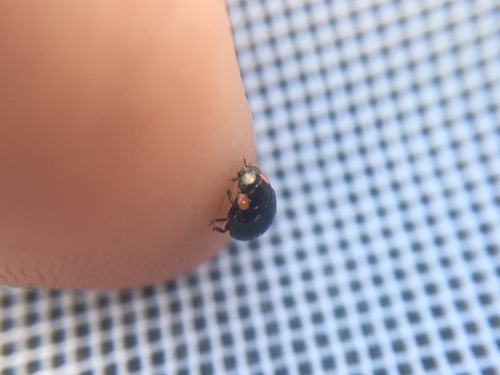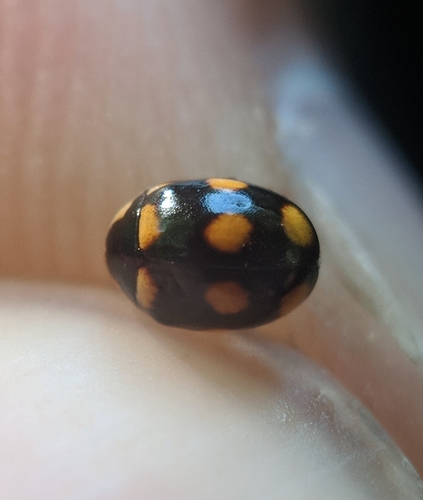Did you know there are over 400 native lady beetle species in North America or that 35 of these species (at least) are found in Vermont?
Lady beetles are fascinating—they are cannibalistic, sometimes migratory, and certain species’ larvae can only be found in ant nests. Additionally, lady beetles are an important biological control, munching down aphids, plant mites, scales, and other small, herbivorous insects. Native lady beetles are particularly important to our ecosystems, fine-tuning their life cycles to synchronize with that of preferred prey species. Without our native lady beetles, the species they prey on may have population explosions, causing serious damage to host plants.
Unfortunately, native lady beetles are in decline across North America, likely due to land use change and the introduction of non-native lady beetle species. In Vermont, our native species seem to be following national trends. However, Vermont’s modern lady beetle fauna is poorly understood. Currently, twelve of our 35 native species have not been seen in over 40 years. Where did these species go? What do we need to do to help native lady beetles thrive?
In an effort to find answers to our questions about Vermont’s lady beetle fauna, the Vermont Atlas of Life team started the Vermont Lady Beetle Atlas. As you might imagine, searching the entire state for tiny lady beetles is a monumental task. Therefore, we invite (and heartily encourage) you, our community naturalists, to join us in our search. Your participation greatly increases the probability of finding our long-lost beetles! Already, volunteer naturalists have rediscovered four of Vermont’s lost lady beetle species and recorded three new species. In our pilot year (2020) alone, community naturalists doubled the total number of research-grade lady beetle observations in iNaturalist.

Bigeminate Sigil Lady Beetle (Hyperaspis bigeminata) © Spencer Hardy
How many lady beetle species can you find?
Join us in June for the Vermont Lady Beetle BioBlitz!
We are holding a week-long Vermont Lady Beetle BioBlitz June 5 – 12, 2021 to concentrate our efforts on finding as many lady beetles as possible across the entire state. To participate, simply go outside and search everywhere for lady beetles (you never know where these little ones will show up), snap a few photos of every beetle you find, and upload your observations to iNaturalist. That’s it – so easy, and so much fun!
Lady beetles are swift, so it’s helpful to have an insect net and a clear glass container handy to hold the beetles in while taking photos. For more information on search methods, how to photograph beetles, and how to upload your observations to iNaturalist, see “Step 2: Collecting Data on a Site Survey” of the Vermont Lady Beetle Atlas Participant Manual. Also, you’ll want to join the Vermont Lady Beetle Atlas on iNaturalist and the Vermont Lady Beetle BioBlitz (follow the links, sign into iNaturalist, and click Join in the upper-right hand corner) to receive updates and stay involved!
Lady beetles begin to emerge from their overwintering locations (usually in leaf litter) between March and May, breed and lay their eggs soon after emerging, and remain active through the fall. This means that you can search for lady beetles from now until it gets cold again, contributing more important observations outside of the week-long BioBlitz.
Additionally, you can:
- Upload incidental encounters of lady beetles to the Vermont Lady Beetle Atlas on iNaturalist
- Actively search sites for lady beetles and upload your encounters to the Vermont Lady Beetle Atlas on iNaturalist
- Adopt a Lady Beetle Survey Priority Block
Maybe you’ll find one of Vermont’s lost lady beetles, or even a new species never before recorded in the state. Visit the Vermont Lady Beetle Atlas website to find out more ways to get involved and help conserve these fascinating beetles.

Spurleg Lady Beetles © Nathaniel Sharp









